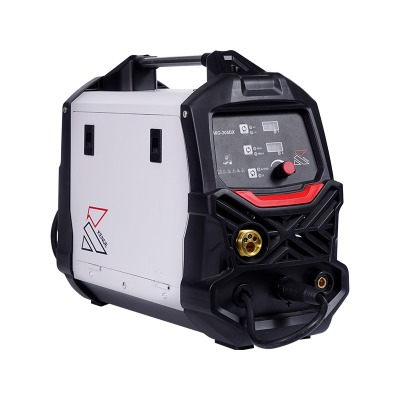Email: [email protected]
 2025.10.24
2025.10.24
 Industry News
Industry News

Welding is a critical process in metal fabrication, with different techniques offering distinct advantages depending on the application. Two widely used welding methods are ARC MMA (Manual Metal Arc) welding and TIG (Tungsten Inert Gas) welding. Understanding how ARC MMA welders compare to TIG welders can help operators, hobbyists, and manufacturers choose the suitable equipment for their projects.
Basic Principles
ARC MMA welding, also known as stick welding, uses a consumable electrode coated with flux to create an electric arc between the electrode and the workpiece. The flux coating melts, forming a protective layer over the weld as it cools, which prevents oxidation. TIG welding, on the other hand, uses a non-consumable tungsten electrode to produce the arc, with an inert gas such as argon shielding the weld from contamination. The filler metal, if needed, is added separately.
Ease of Use and Accessibility
ARC MMA welders are generally easier to set up and operate, making them suitable for beginners or outdoor work where portability is important. The equipment is often more affordable and does not require gas cylinders, allowing for welding in remote or challenging environments. TIG welders, in contrast, require precise control of the torch, gas flow, and filler material, making them more demanding to learn but offering greater precision.
Weld Quality and Appearance
TIG welders typically produce cleaner, more aesthetically pleasing welds due to the controlled arc and gas shielding. They are ideal for thin metals, stainless steel, and projects where a smooth finish is important. ARC MMA welders can produce strong welds but may leave slag on the surface that requires cleaning. While ARC MMA is effective for structural applications, TIG welding excels in applications where appearance and precision are key.
Material Compatibility
ARC MMA welders are versatile and can weld a wide range of metals, including mild steel, cast iron, and some alloys. TIG welding is highly precise and works well on stainless steel, aluminum, and thin sheets of metal. While TIG welders provide better control over heat input, ARC MMA welders are robust and effective for heavy-duty tasks, particularly on thicker metals.
Portability and Cost
Portability is an advantage of ARC MMA welders. They are compact, do not require an external gas supply, and are suitable for fieldwork. TIG welders are generally larger, require gas tanks, and are more sensitive to environmental conditions like wind or drafts. Cost-wise, ARC MMA welders tend to be more budget-friendly, while TIG equipment often comes with higher upfront and maintenance expenses.
Maintenance and Consumables
ARC MMA welding consumes electrodes as part of the process, and slag must be chipped away after welding. TIG welding uses a non-consumable electrode, but the process requires gas and careful torch maintenance. Both methods require regular equipment checks, but TIG welders demand more attention to maintain gas flow and electrode condition for consistent results.
ARC MMA welders and TIG welders serve different purposes and excel in different areas. ARC MMA welders offer portability, affordability, and versatility, making them suitable for outdoor work and heavy-duty applications. TIG welders provide precision, clean welds, and better control over thin metals and high-quality finishes. By understanding the strengths and limitations of each type, users can select the welding method that suits their specific projects and skill levels.